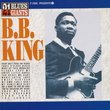| All Artists: Gustav Mahler, Sir Simon Rattle, City of Birmingham Symphony Orchestra, City of Birmingham Symphony Youth Chorus, Ladies of the City of Birmingham Symphony Chorus, Birgit Remmert, Simon Keenlyside Title: Mahler: Symphony No. 3 / Des Knaben Wunderhorn Members Wishing: 0 Total Copies: 0 Label: EMI Release Date: 1/12/1999 Album Type: Import Genres: Pop, Classical Styles: Vocal Pop, Symphonies Number of Discs: 2 SwapaCD Credits: 2 UPC: 724355665720 |
Search - Gustav Mahler, Sir Simon Rattle, City of Birmingham Symphony Orchestra :: Mahler: Symphony No. 3 / Des Knaben Wunderhorn
 | Gustav Mahler, Sir Simon Rattle, City of Birmingham Symphony Orchestra Mahler: Symphony No. 3 / Des Knaben Wunderhorn Genres: Pop, Classical
|
Larger Image |
CD DetailsSimilar CDs |
CD ReviewsWonderful Piece - Disappointing Performance G. Webby | 02/20/1999 (3 out of 5 stars) "Until this recording, Simon Rattle's Mahler cycle has been exquisite. He managed to breathe new life into the overplayed First Symphony and made the difficult Seventh Symphony seem practical and clear. The other recordings in the cycle also stand out as among the best available.Unfortunately, he missed the mark with his recording of the Third. His performance is not poor, but certainly is not up to par with the others in the cycle. This symphony is among my favorites and I listened to his recording with high expectations. I use as comparisons several other recordings: Bernstein - NYP; Levine - CSO; Horenstein - LSO.At times, the first movement simply just seems to be too much for the CBSO. While not technically flawed, it is frequently out of control. Philip Harrison's trombone solo is uninspired, and cannot compare to the solos of Dennis Wick (Horenstein recording) or Joe Alessi (Bernstein). The bulk of the movement is straightforward and there are few surprises until the very end, which has clarity and energy reminiscent of Rattle's recording of the end of the 3rd movement of the Ninth Symphony.The second and third movements are musically very straightforward, and the CBSO's performance is clean and precise. Jonathan Quirk's posthorn solo in the middle of the third movement is very nice, and the balance between the orchestra and the "distant" posthorn is perfect. It is on par with Herseth's (CSO) and Smith's (NYP). The end of the third movement is as exciting as the end of the first.Ms. Remmert's rendition of Nietzsche's "O Mensch" came as something as a surprise. In addition to being technically flawless, her performance worked very well with the orchestra. Many performances of this movement seem to be soloist with accompanying orchestra, but it simply works better as a blended ensemble as in this recording.The fifth movement is again fairly straightforward. Of note here is the children's choir, which sings in a controlled and angelic manner, unlike the Bernstein recording where they frequently seem to be shouting.Though the middle movements are fine, the last movement is just too fast, from beginning to end. It is more of a lively Andante than a true Adagio. The very ending seems especially rushed, and loses the grandeur inherent in the music. This is unfortunate, because the performance itself is very smooth and balanced. The poor choice of tempos ruins what could otherwise be a fantastic performance.In addition to the Third Symphony, this recording also features 8 Lieder from "Des Knaben Wunderhorn" with Simon Keenlyside as soloist. The performances are respectable, even outstanding at times, but still pale in comparison to those by Fischer-Dieskau." Perfectly Faithful to the Score! C. Escamilla | 04/23/2007 (5 out of 5 stars) "As always with Sir Simon, here he is nothing but faithful to Mahler's score. The first movement is a true march. It moves along at a rather quick pace, something very necessary in such a long movement. Rattle clearly has a firm grasp on the movement's structure, and that makes this a very successful performance of the movement. The second movement may not be all that special, but Rattle does keep structure at the fore again, and pays great attention to the numerous details in the movement. The third movement is quite brilliant. You can really here the animals frolicking and playing, and the hushed still when man enters (posthorn episodes)is absolutely amazing. Birgit Remmert, as the reviewer below said so well, could be a little more mezzo-ish in the fourth movement, but to her credit she floats the high G's and F's in the bell-movement. It is so important that the mezzo float those passages as they are precusors to the same sections that appear in the finale of the Fourth Symphony (which is easily floated since it is sung by a soprano soloist). Too many mezzos sing them too heavily, after all it is marked pianissimo. On to the controversial last movement. For my taste, no conductor does this movement better than Tennstedt. That is not to discredit Bernstein, MTT, Horenstein, or any of the other greats. However, Tennstedt keeps this movement flowing at a quicker than normal pace, yet manages to never make the music sound hurried. Rattle also opts for a quicker pace, but one which does get a bit frantic at the various moments where Mahler asks the conductor to speed up. The controversy that I mentioned above comes from Rattle's fast timpani and bass notes at the end of the piece. All those who think he rushes these last few bars should look in the score. Right when the timpani enter at the end Mahler marks "a tempo". Given Rattle's quicker-than-normal tempo at the start of the movement, it is obvious that he does NOT rush the final bars, he simply does what the composer says. This technique of studying the score and performing it according to the composer's markings seems to elude many conductors, and thus their performances fail because thay are not faithful to the composer's intentions. As always, Rattle is perfectly faithful to Mahler's intentions. I am not saying that I agree with this faster tempo, nor do I agree with the faster timpani strokes as they do diminish the grandeur at the end, but Rattle's actions are justified by Mahler's markings. We all just happen to be spoiled on the grand endings that the greatest recordings have given us. Tradition can be a very cruel thing. Bravo, Sir Simon, for always being faithful, even if it means being different!" Commentary on the reviews presented so far G. Webby | Greytown, N.Z. | 01/02/2006 (4 out of 5 stars) "I am somewhat bemused. I intended to buy the Rattle version, since the English Gramophone gives it top billing (that is, the sign of a key, meaning it should be in everyone's collection.) Yet these reviews are somewhat lukewarm. Do Americans have different tastes from the British? Or from me, a New Zealander, with, like so many Americans, an English background.?_I know, from living in the States for three years, Americans like what I call a more steely sound, and the need for a somewhat cold but technically perfect sound.I think, but I am not sure, I prefer a warmer glow or sheen. Yet the reviewers are actually picking on Rattle as if he were a somewhat neophyte conductor. and the Birmingham a second level orchestra - a point of view most critics wouldn't agree with. What to do? What to do?
I would sincerely appreciate comment form other buyrs of the CD (I do notice that not one of the reviewers suggested a firm alternative, citing goodnesses (!) in all of them, but no overweening winner. Perhaps I had better shift to Shostakovitch!" |

 Track Listings (3) - Disc #1
Track Listings (3) - Disc #1